Circulating Coin Designs
1 yen Aluminum Coin
The 1-yen coin, which was first issued in 1955, is the oldest coin among presently-manufactured coins and marked its 50th anniversary in 2005.
The design has not changed for more than 50 years.
A young tree on the obverse side symbolizes the healthy growth of Japan.
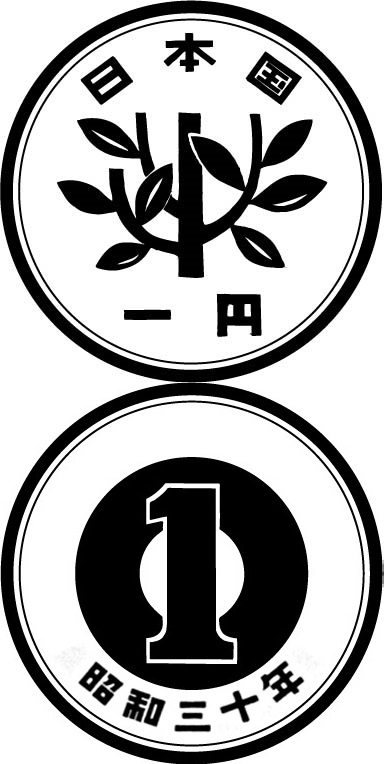
| Design | young plant |
|---|---|
| Material | Aluminum |
| Composition | Pure Aluminum |
| Weight | 1.0g |
| Diameter | 20.0mm |
| Commencement of Production |
1955 |
5 yen Brass Coin
The 5-yen coin with a center hole was first issued in 1949 just after the war, and its character font was changed to the current font in 1959.
Japan's major industries were used as the basis for the obverse design, as Japan looked forward to postwar reconstruction. A rice plant symbolizes agriculture, a gearwheel around the center hole indicates heavy industry and the horizontal stripes represent the fishery.
Young leaves on the reverse side symbolize Japan, which was reborn as a democratic nation after the war.
The face value of the 5-yen coin is written in Chinese characters, while Arabic numerals are used on other coins.
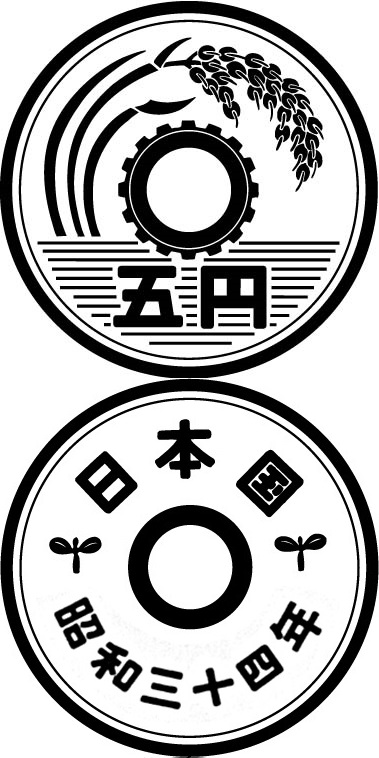
| Design | rice plant and young leaves |
|---|---|
| Material | Brass |
| Composition | Copper 600 to 700 Zinc 400 to 300 |
| Weight | 3.75g |
| Diameter | 22.0mm |
| Commencement of Production |
1959 |
10 yen Bronze Coin
The 10-yen coin with ridges was fist issued in 1951, with an unmilled version appearing in 1959. The obverse side features the Phoenix Hall of Byodo-in Temple in Uji City in Kyoto Prefecture, which was named a UNESCO World Heritage List in 1994 as part of the Historic Monuments of Ancient Kyoto. Fujiwara no Yorimichi (992-1074) built the temple to reproduce heaven on earth. The hall houses a statue of Amida Buddha and its walls depict Amida Buddha coming to this world to save people. The reverse side features the leaves of an evergreen tree.
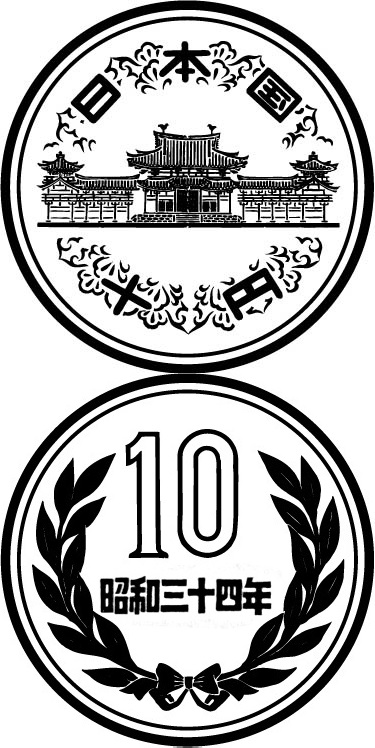
| Design | ever-green tree, Byodo-in Temple |
|---|---|
| Material | Bronze |
| Composition | Copper 950 Zinc 40 to 30 Tin 10 to 20 |
| Weight | 4.5g |
| Diameter | 23.5mm |
| Commencement of Production |
1959 |
50 yen Cupronickel Coin
The first 50-yen coin with no center hole, was struck nickel and has a diameter of 25 mm. It was first issued in 1955. In 1959, because it resembled the 100-yen coin in size and color, the 50-yen coin was pierced to make it more distinguishable from the 100-yen piece.
The current 50-yen coin was first struck in 1967. Its material was changed from nickel to cupronickel in response to the replacement of the 100-yen coin's metal from silver alloy to cupronickel due to increases in the price of silver.
Each of these three versions of the 50-yen coin has a different design, but they have in common the fact that their subject matter is the chrysanthemum.
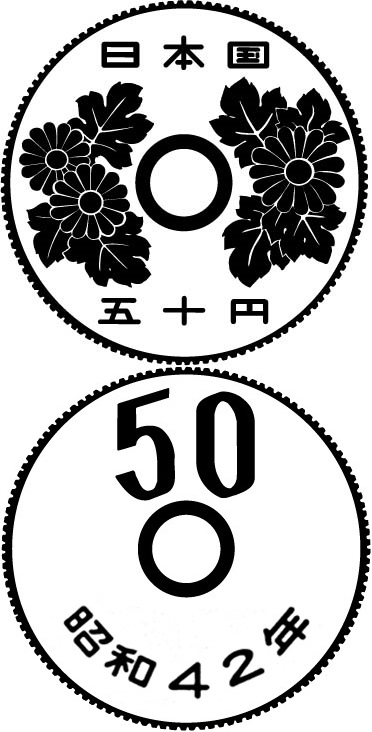
| Design | chrysanthemum |
|---|---|
| Material | Cupronickel |
| Composition | Copper 750 Nickel 250 |
| Weight | 4.0g |
| Diameter | 21.0mm |
| Commencement of Production |
1967 |
100 yen Cupronickel Coin
The current 100-yen coin was first issued in 1967. Due to increases in the price of silver, its material was changed from silver alloy to cupronickel. The first obverse design was a "phoenix" (1957-1958), then was changed to "ears of a rice plant" (1959-1966) and later became "cherry blossoms" (1967- present).
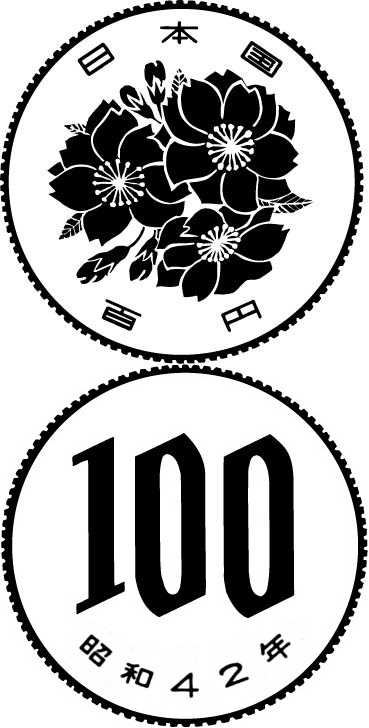
| Design | cherry blossoms |
|---|---|
| Material | Cupronickel |
| Composition | Copper 750 Nickel 250 |
| Weight | 4.8g |
| Diameter | 22.6mm |
| Commencement of Production |
1967 |
500 yen Bicolor Clad Coin
In response to a need for a higher value coin for use in vending machines, the 500-yen coin replaced the 500-yen banknote in 1982. Before that, the 100-yen coin was the highest denomination coin.
The material used was changed from cupronickel to nickel-brass in 2000, and to nickel-brass, cupronickel and copper with bicolor clad structure in 2021. Anti-counterfeit and anti-alternation features of the coin were upgraded accordingly, even though the design has not been changed.
The obverse side features paulownia, while the reverse side features bamboo and mandarin orange (wild orange).
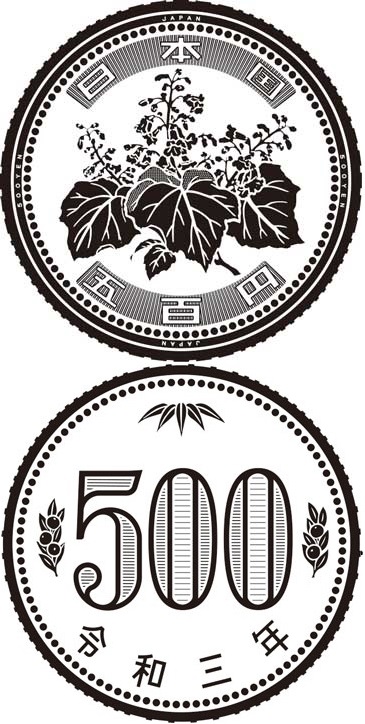
| Design | paulownia, bamboo and mandarin orange (wild orange) |
|---|---|
| Material | Nickel-brass, cupronickel and copper |
| Composition | Copper 750 Zinc 125 Nickel 125 |
| Weight | 7.1g |
| Diameter | 26.5mm |
| Commencement of Production |
2021 |






